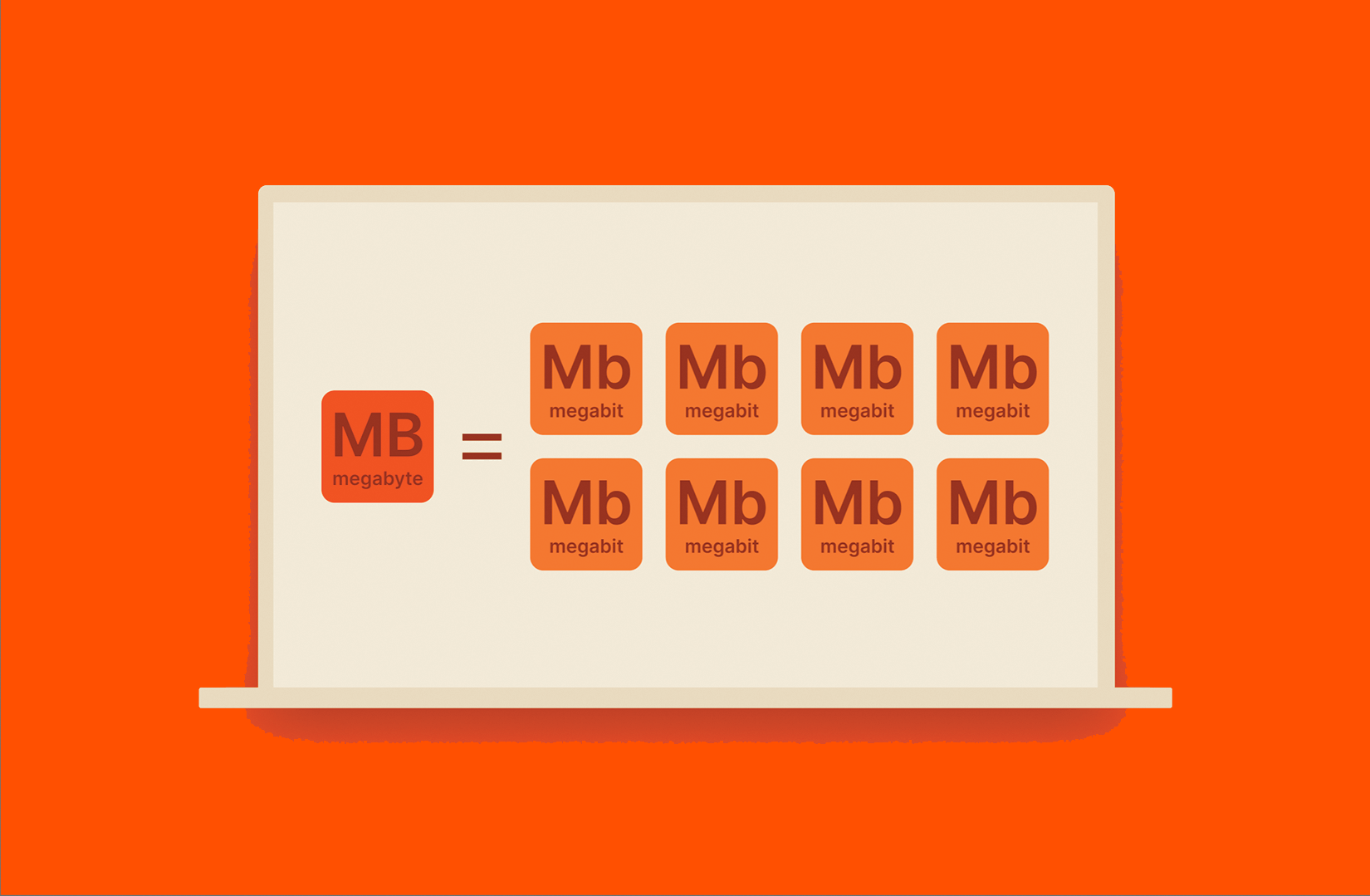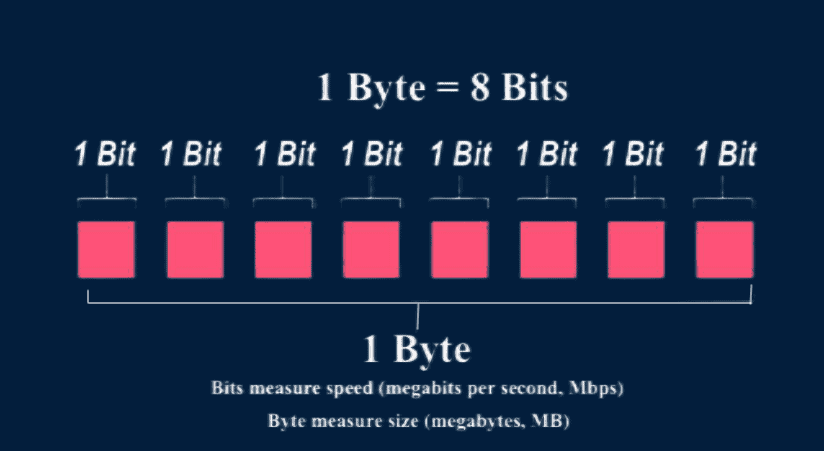Debunking Megabits Per Second: What Customers Need to Know
Debunking Megabits Per Second: What Customers Need to Know
Blog Article
How Megabits Per Second Impact Your Online Tasks
The idea of megabits per second (Mbps) plays an essential duty in shaping our on-line experiences. Greater Mbps can improve performance and decrease interruptions, while inadequate speeds may foster aggravation and ineffectiveness.
Recognizing Megabits Per Second
When thinking about internet rate, it's vital to recognize the principle of megabits per second (Mbps), which offers as a conventional measurement for information transfer rates. This statistics evaluates just how much data can be transferred over a net link in one second, providing a clear understanding of efficiency abilities - Megabits Per Second. For context, one megabit is equivalent to one million little bits, and Mbps is commonly used to express bandwidth for different online tasks
A higher Mbps indicates a faster internet connection, enabling customers to perform tasks such as downloading and install data, surfing web sites, and taking part in on the internet pc gaming more efficiently. Common browsing calls for around 1-5 Mbps, while streaming high-def video clip may require 5-25 Mbps. Recognizing these requirements is essential for determining the ideal web speed required for certain activities.
Additionally, the number of tools attached to a network can influence overall efficiency. Multiple users streaming, gaming, or downloading simultaneously can strain offered bandwidth, leading to slower speeds - Megabits Per Second. Evaluating personal online routines and requirements is vital in picking a web strategy that straightens with one's demands, making certain a smooth digital experience
Streaming and Buffering Issues
Streaming high-def material has ended up being a staple of modern on-line enjoyment, yet it is often come with by frustrating buffering concerns. These disruptions can dramatically interfere with the checking out experience, causing dissatisfaction and possible loss of audience interaction. Buffering happens when the data transferred from the streaming service is not received quickly sufficient to preserve a smooth playback, frequently because of inadequate internet speed determined in megabits per second (Mbps)

Moreover, real-time streaming can be influenced by network congestion, which occurs when multiple devices share the very same transmission capacity. As a result, optimizing connection rate and making certain sufficient Mbps is crucial for a seamless streaming experience. As streaming services remain to evolve, comprehending the impact of Mbps on buffering problems stays vital for customers seeking nonstop entertainment.
Online Video Gaming Performance
The influence of internet rate on online tasks extends past streaming, substantially affecting on the internet gaming efficiency. In affordable gaming, low latency and high bandwidth are essential for a smooth experience. A quick link minimizes lag, allowing gamers to react quickly to in-game events, which can be the difference between success and loss.
Data transfer, measured in megabits per second (Mbps), plays a vital function in supporting multiple tools and video gaming systems concurrently. Inadequate transmission capacity can cause went down connections or minimized game quality, negatively affecting gameplay. For instance, on the internet multiplayer video games call for substantial information transfer, particularly throughout peak video gaming hours when countless players are online.
Hectic first-person shooters demand higher rates to preserve responsiveness, while turn-based method games may operate moderately well on lower rates. As on-line video gaming proceeds to develop, with boosting visual fidelity and more intricate multiplayer atmospheres, the demand for higher Mbps will just heighten.
Video Conferencing Top Quality
In today's electronic landscape, video clip conferencing top quality is greatly influenced by web speed, specifically in terms of transmission capacity and latency. High-grade video clip calls call for enough bandwidth to transfer sound and video information perfectly. Commonly, a minimum of 1.5 Mbps upload and download speeds is advised for conventional interpretation video, while high-def video conferencing usually demands a minimum of 3 internet Mbps.
Latency, or the hold-up between sending out and receiving data, likewise plays a vital role in the customer experience. Greater latency can lead to resemble, lag, and disjointed interactions, which can hinder partnership and involvement throughout conferences.
Additionally, multiple individuals in a video meeting can strain readily available transmission capacity, necessitating also higher rates. Network blockage, commonly triggered by synchronised tasks like streaming or downloading, can even more weaken video top quality. Thus, for organizations counting on video clip conferencing for remote cooperation, comprehending the partnership in between megabits per second and general communication quality is important for maintaining efficiency and improving virtual communications.
Picking the Right Web Plan
Picking an ideal web plan is essential for guaranteeing optimum performance in different on-line activities, specifically in setups that require high transmission capacity, such as video conferencing and online video gaming. Megabits Per Second. When thinking about a net plan, it is crucial to review both the speed and information allocation to match your particular usage needs
For houses with several users engaging in simultaneous tasks, a plan providing higher megabits per YOURURL.com second (Mbps) is recommended. Normally, a minimum of 25 Mbps appropriates for common streaming and surfing, while strategies going beyond 100 Mbps are more effective for even more extensive jobs. Additionally, think about the nature of your online activities; video clip conferencing calls for a minimum of 1.5 Mbps upload speed, while on the internet video gaming may require a lower latency but regular connection.
It is also crucial to analyze your data cap. Unlimited data plans can avoid throttling and disturbances, especially if hefty usage is expected. Research study solution carriers in your area, as availability and pricing can vary. By attentively picking a net plan tailored to your requirements, you can boost your on the internet experience, making certain smooth, undisturbed accessibility to your favored tasks.
Conclusion
In verdict, the significance of megabits per second (Mbps) in forming online activities can not be overemphasized. Higher Mbps facilitates seamless streaming, lowers buffering, boosts video gaming experiences, and makes sure high-grade video conferencing. On the other hand, poor bandwidth can bring about aggravating interruptions and reduced efficiency across different jobs. A comprehensive understanding of specific or family Mbps needs is essential for choosing an appropriate internet plan that sufficiently supports varied online tasks and individual demands.

Typically, a minimum of 25 Mbps is suitable for standard streaming and browsing, while plans going beyond 100 Mbps are more suitable for even more extensive jobs. Furthermore, consider the nature of your online activities; video conferencing calls for at the very least 1.5 Mbps post rate, while online gaming may need a reduced latency but regular link.
Report this page